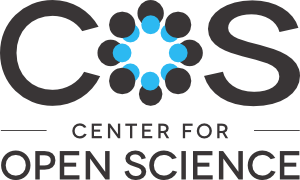Location
Our mission is to increase openness, integrity, and reproducibility of research.
These are core values of scholarship and practicing them is presumed to increase the efficiency of acquiring knowledge.
For COS to achieve our mission, we must drive change in the culture and incentives that drive researchers’ behavior, the infrastructure that supports their research, and the business models that dominate scholarly communication.
This culture change requires simultaneous movement by funders, institutions, researchers, and service providers across national and disciplinary boundaries. Despite this, the vision is achievable because openness, integrity, and reproducibility are shared values, the technological capacity is available, and alternative sustainable business models exist.
COS's philosophy and motivation is summarized in its strategic plan and in scholarly articles outlining a vision of scientific utopia for research communication and research practices.
Because of our generous funders and outstanding partners, we are able to produce entirely free and open-source products and services. Use the header above to explore the team, services, and communities that make COS possible and productive.
Members:
Resources
Displaying 441 - 445 of 447The land tenure system in Bangladesh
Provides a critique of the existing system of tenure classification, suggests an alternative and test with empirical data from a survey in three districts in Bangladesh
Conceptual issues relted to classification of land tenure systems in Bangladesh
Census, surveys and research studies conventionally identify three tenure classes -owner-operators, part-tenants and tenants - in Bangladesh. Some sources identify two more classes-part-operators and absentee owners. Conceptual deficiencies of these 3 or 5 type tenure classifications are discussed and alternative conceptual framework is suggested for identifying and classifying tenure relationship. Applying the suggested framework, 17 different tenure relations were identified in a sample of 385 farms.
Some economic implications of the current and future administration of the Reclamation Act of 1902
Book Review: Land Economics Research
Land Economics/Use, Research and Development/Tech Change/Emerging Technologies, Research Methods/ Statistical Methods,
Land Clearing and Drainage Data From Airphoto
The obtaining of quantitative data for economic analysis of changes in the agricultural use of land has been a problem in recent years. Field study is a slow and expensive method of providing information. Usually, it requires several experienced persons to collect the data needed. The airphoto interpretation method described in this article supplies suitable data for economic studies with considerable savings in time and cost. With this method, a minimum of personnel is needed.


